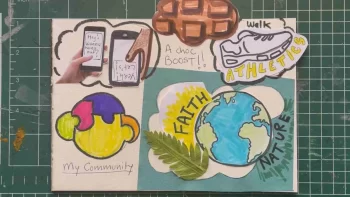This website uses cookies so that we can provide you with the best user experience possible. Cookie information is stored in your browser and performs functions such as recognising you when you return to our website and helping our team to understand which sections of the website you find most interesting and useful.
How to practice yoga
Mindfulness, Physical Health
A daily practice is essential to help us stay physically fit, mentally balanced, spiritually connected, and emotionally strong. It is a simple, accessible, and affordable practice that can be done almost anywhere. It doesn’t have to be long or complicated, even if you only have 15 minutes per day, it will still benefit your body, mind and spirit.
Yoga Basics will help learn the fundamental foundations of yoga in both a practical and philosophical sense. Here’s their guide to starting yoga at home.
- Find your spot – beginning is as simple as identifying a place to practice. This can be a special spot dedicated to your practice, or any place where you can lay down your yoga mat and have enough room to move safely. The ideal space will be different for each person and is often influenced by your dwelling and other lifestyle factors.
- Gather your equipment – if you practice at home, you will probably need a mat, blocks, and other props. And if you practice outdoors, you may need a blanket, a mat, and some water. Make sure you have all of the at home yoga essentials that you need before you begin.
- Choose a style of yoga that works for you – there are many styles of yoga, each with its own set of benefits. Some styles emphasise stretching and flexibility, others focus on strength building, and still others are all about relaxation. In your personal home practice you can even combine elements from multiple styles!
- Choose your focus – some days you may come to your mat knowing exactly what you want to work on, and move right into your practice. Other days, you may feel less inspired. There are lots of resources out there for these days. You can visit our practice section to find yoga pose sequences for all levels of ability and special sequences to match your mood. You may also find it useful to have a couple yoga books to reference and inspire you.
- Start simple – get started with a short, basic and beginner type of practice and build from there. At the start, it is more important to build the habit of a home practice than what it looks like. Once it becomes part of your routine, then experiment with longer and more challenging practices.
- Commit to a practice schedule – be honest and realistic with yourself, so you are more likely to stick to it. How long will you practice? What time of day will you practice? How many days a week will you practice? If you are still taking classes, it may be useful to try to practice at the same time on your off days.
- Experiment and go deeper – once you have established a regular practice, consider experimenting with different styles and practices. Try different styles, such as Iyengar, vinyasa flow, or power yoga. Consider incorporating some yin yoga or a few restorative poses. Consider shifting your focus to a different type of movement, such as standing poses, back bends, forward folds, twists, or inversions. Add or try different types of pranayama breathing techniques. Add or try different styles of meditation, such as mindfulness, loving kindness, or mantra meditation. Find additional tips to maintain and deepen your home practice.
Take a look at Yoga Basics’ resources online.
Read More





